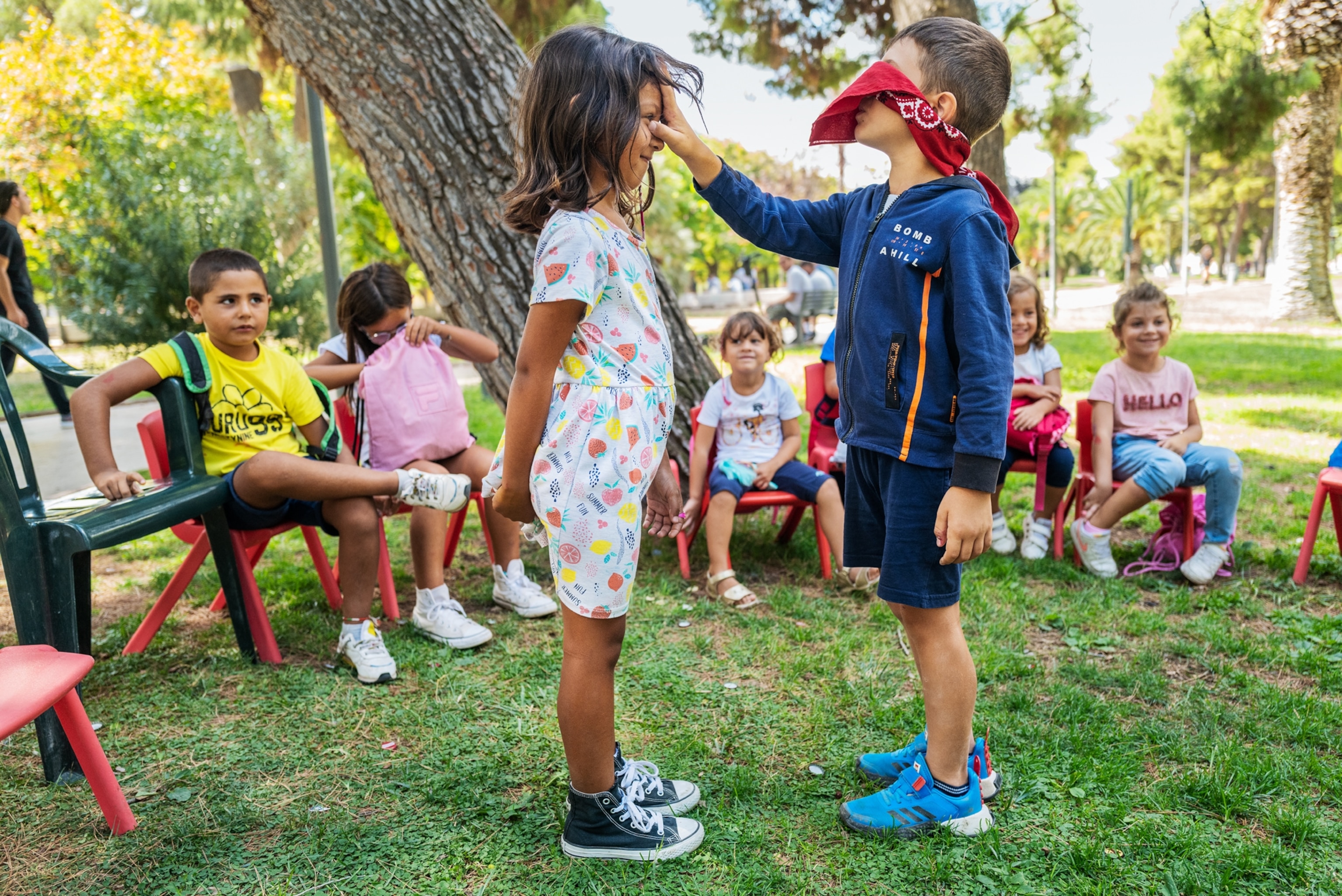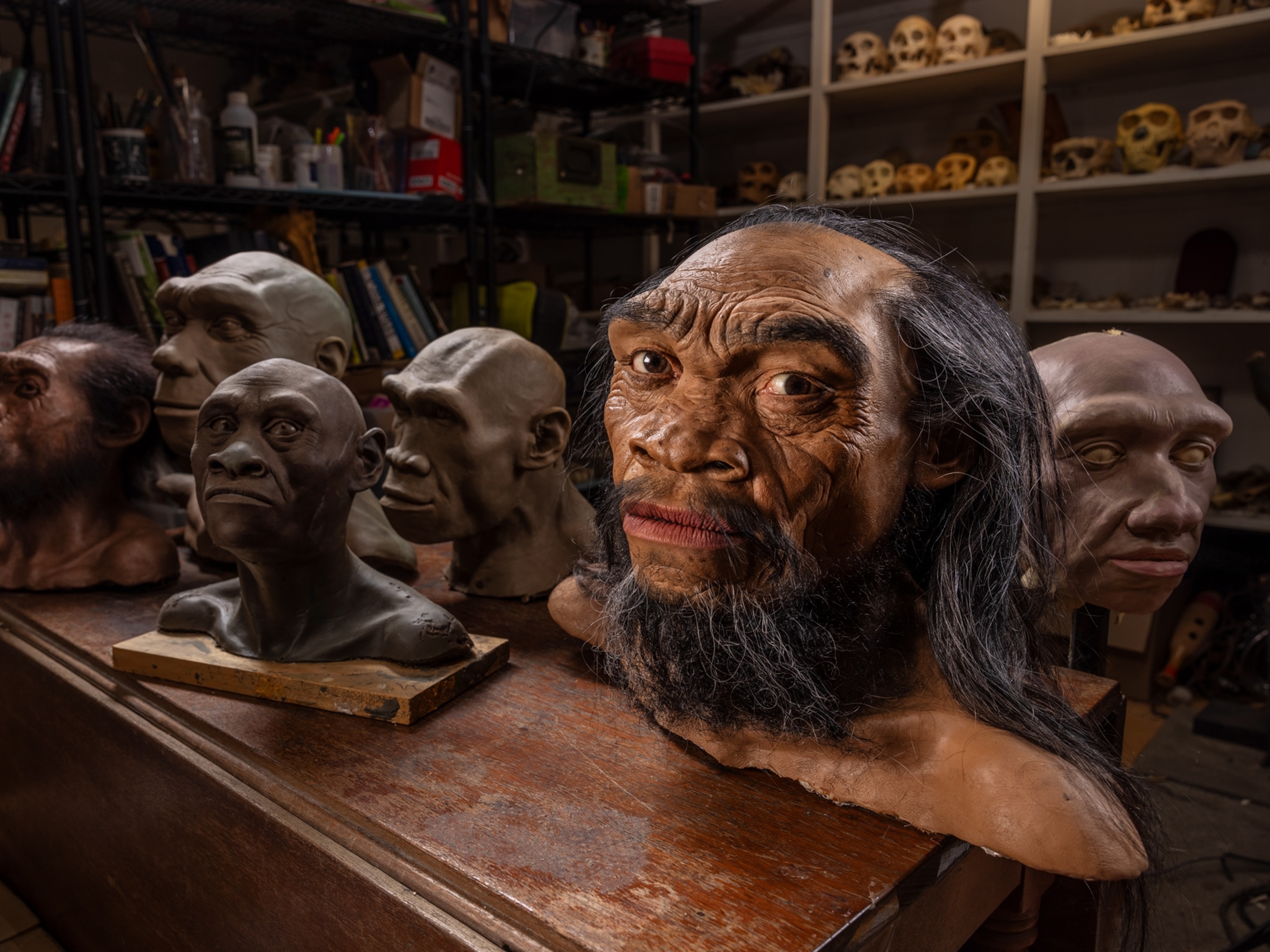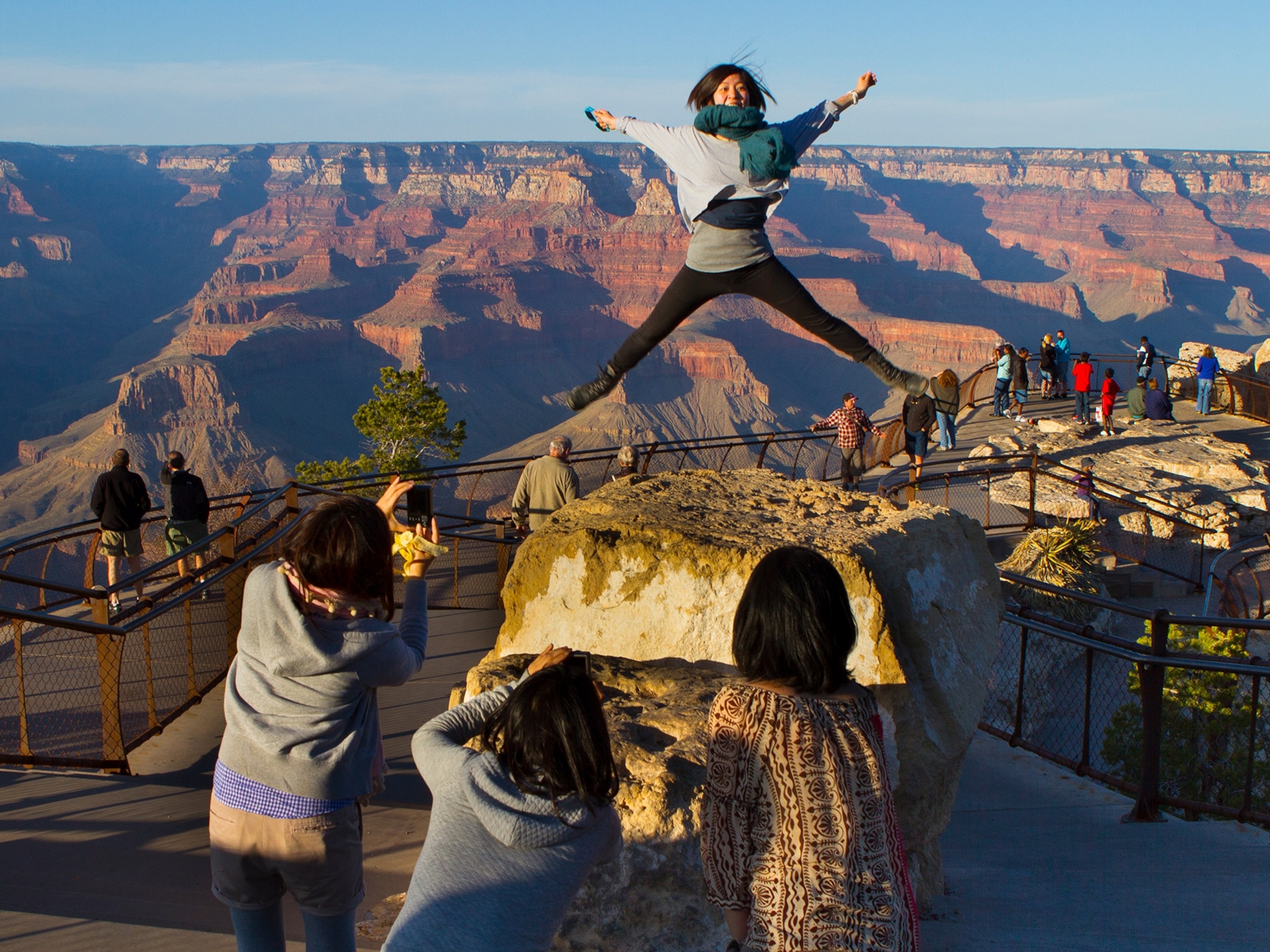
Why it’s important to explore the science of touch
Our long physical separations, in fear of COVID-19, reinforced what scientists already believed: that our close connections with others keep us healthy.
We experience the world through our senses: touch, sight, hearing, smell, and taste.
Among the five, the sense of touch is singularly important, a growing body of research confirms. As contributing writer Cynthia Gorney explains in this month’s cover story, “Human beings require the physical presence of others, the comforting touch of others, in order to stay healthy.”
At the School for Creativity in Andria, Italy, students learn that lesson at an early age. “The culture of touch in that school is daily,” says longtime National Geographic photographer Lynn Johnson. “Moment by moment. It’s very physical. They’re always hugging and kissing.” In the photo above, the children play a game in which a blindfolded student tries to recognize a classmate just by touch. Invariably they got it right, Johnson says.
This cover story assignment required Johnson to show the power of touch with her images. To do that, she told me, she “went on a mission: to try to look for situations, for people, for whom touch is a critical part of their lives—their survival, their orientation in life.”
That mission took her to Margaret Malarney and her family in Chagrin Falls, Ohio. “I met Margaret when she was minimally conscious. I didn’t see any response on her face,” Johnson says. But over a series of visits spanning seven months, Johnson witnessed “the way the family physically loved her back to life. We don’t know the science behind it; we don’t know why.”
And yet, Johnson says, “we can believe that touch has such value.”
Thank you for reading National Geographic.





